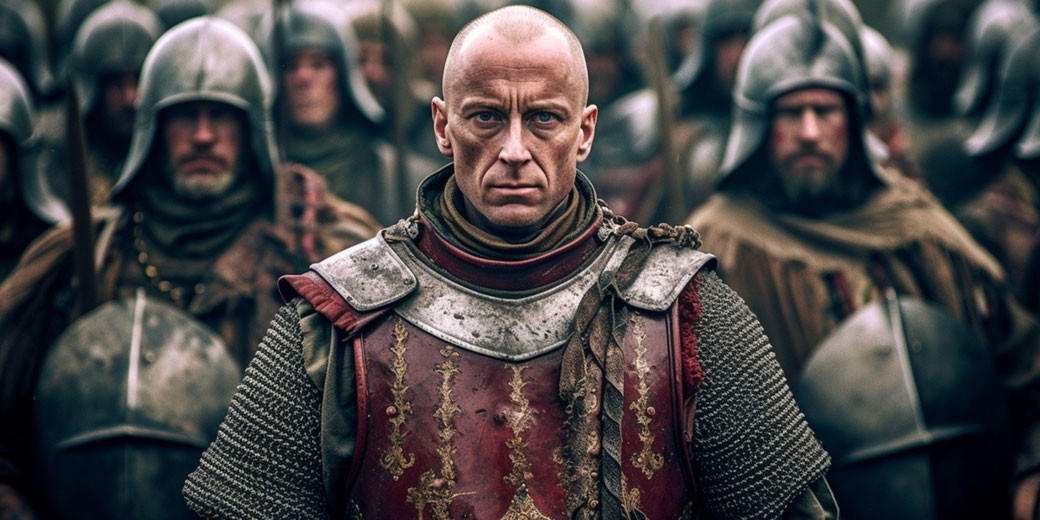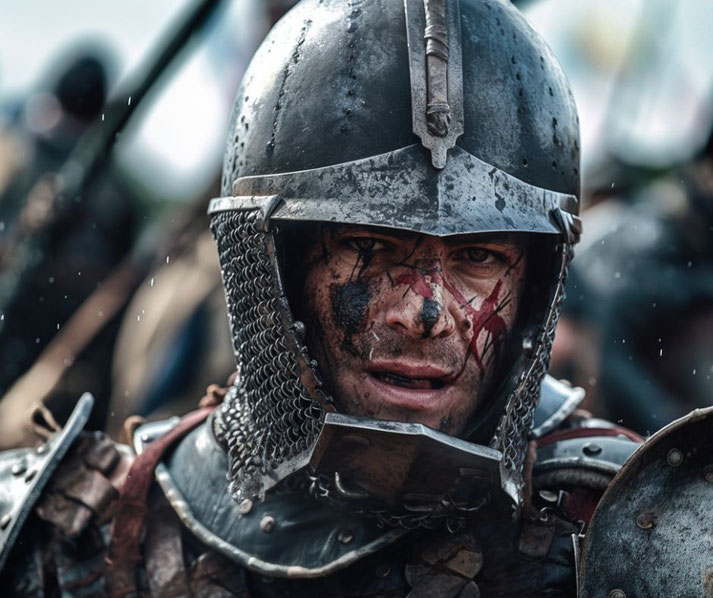How Henry V triumphed at the Battle of Agincourt

The Battle of Agincourt, fought on October 25, 1415, was a pivotal moment in the Hundred Years' War between England and France.
The battle has since been immortalized in literature, art, and national mythologies, most notably in Shakespeare's "Henry V."
Yet, beyond the dramatizations and the patriotic fervor, lies a complex historical event which turned a seemingly doomed English campaign into a legendary victory.
This battle not only showcased the tactical ingenuity of the English, particularly the devastating effectiveness of the longbow, but also exposed the limitations of the heavily armored French knights, bogged down in the muddy fields of Agincourt.
The outcome had far-reaching implications, altering the course of the war and shaping Anglo-French relations for generations to come.
The ongoing conflict of the Hundred Years' War
When Henry V ascended to the English throne in 1413, he inherited not just a kingdom but also a legacy of conflict with France.
Eager to assert his authority and lay claim to French territories, Henry V embarked on a military campaign that would culminate in the Battle of Agincourt.
On the other side, the French were led by a king, Charles VI, who was plagued by bouts of madness and was unable to lead his troops into battle.
The French command fell to the Constable of France, Charles d'Albret, and a cadre of nobles who were confident of their numerical superiority and the might of their armored cavalry.
From August 18 to September 22, 1415, King Henry V commanded a siege aimed to capture the strategically important French port town of Harfleur.
Despite initial optimism, the siege turned out to be a grueling affair for the English, lasting over a month and plagued by disease, most notably dysentery, which significantly weakened Henry's army.
Although the English eventually succeeded in capturing the town, the siege had depleted the English army, both in terms of manpower and resources.
How the French intercepted the English
After successfully capturing Harfleur following a grueling siege, Henry V faced a dilemma.
His army was weakened by disease and the prolonged fighting, and winter was approaching.
Rather than hunkering down, Henry made the audacious decision to march his army to Calais, an English stronghold in northern France.
The English forces set out on a perilous journey, laden with the spoils of war and hampered by the sick and wounded, making their way through hostile territory.
As Henry's army moved, the French were hastily assembling a force to intercept them.
The French nobility, eager to avenge their loss at Harfleur and confident in their numerical superiority, saw this as an opportune moment to crush the English once and for all.
Charles d'Albret, the Constable of France, took command of a diverse army that included knights, men-at-arms, and archers.
The French strategy was straightforward: use their overwhelming numbers and the power of their cavalry to smash the English lines.
As the English army reached the vicinity of Agincourt (modern Azincourt), it became clear that a battle was imminent.
Henry V took stock of his weary troops and the muddy, freshly plowed fields that lay before them.
It was far from an ideal battleground, but it was one that offered some advantages, such as narrow passages that could neutralize the French numerical advantage.
How the English won the Battle of Agincourt
On the morning of October 25, 1415, the English and French armies faced each other across the muddy fields near the village of Agincourt.
The English were vastly outnumbered, with estimates suggesting they had around 6,000 men, the majority of whom were archers armed with longbows.
In contrast, the French forces were estimated to be between 12,000 and 36,000, a mix of knights, men-at-arms, and archers.
Despite the odds, Henry V displayed tactical brilliance in his deployment. He positioned his men-at-arms in the center and flanked them with longbowmen, who were protected by wooden stakes driven into the ground.
This formation was designed to funnel the French into a killing zone where they would be vulnerable to English arrows.

As the battle commenced, the French cavalry charged, only to find themselves mired in the muddy terrain, their advance slowed to a crawl.
The English longbowmen unleashed volleys of arrows, each capable of penetrating armor at short ranges.
The French knights and men-at-arms, weighed down by their armor, struggled to close the distance and were cut down in droves.
Those who reached the English lines faced fierce hand-to-hand combat and were often captured or killed.
The French second line, seeing the disaster unfold, hesitated and then pushed forward, only to meet the same fate as the first.
By the end of the day, the field was littered with the dead and wounded, the majority of whom were French.
Was Henry V a villain for executing French prisoners?
The English decision to execute many of their French prisoners was a grim but strategically important moment in the Battle of Agincourt.
As the battle wore on, the English found themselves outnumbered not just by the French army, but also by their growing number of prisoners.
Fearing a counterattack and unable to guard such a large number of captives, Henry V made the difficult decision to execute them, ensuring that his men could focus on the battle at hand.
However, the act has been criticized as ruthless and inhumane, even by the standards of the time.
The killing of prisoners who had surrendered in good faith was a violation of the chivalric code that both sides ostensibly adhered to.
Yet, not all French captives were killed in that moment. At the conclusion of the battle, Henry still held on to numerous French nobles.
This provided not only a political advantage but also a financial one, as ransoms were a lucrative source of income.

The dramatic aftermath of the battle
Henry V's gamble had paid off spectacularly. The English suffered relatively light casualties, while French losses were staggering, both in terms of manpower and the nobility captured or killed.
The battle showcased the effectiveness of the English longbow and exposed the vulnerabilities of traditional medieval tactics when faced with innovative strategies and unfavorable conditions.
The English emerged from the battle with a stunning victory that bolstered their position in the ongoing Hundred Years' War.
Henry V returned to England as a national hero, his reputation as a military commander solidified.
The victory also provided a significant morale boost for the English, who saw it as divine validation of their cause.
For France, the defeat was nothing short of catastrophic. The loss of life was immense, particularly among the French nobility, which weakened the feudal structure that underpinned the French army.
The defeat also exposed the limitations of traditional medieval tactics and the need for military reform.
The French monarchy, already weakened by internal strife and the mental illness of Charles VI, found itself in an even more precarious position.
What do you need help with?
Download ready-to-use digital learning resources
Copyright © History Skills 2014-2024.
Contact via email
With the exception of links to external sites, some historical sources and extracts from specific publications, all content on this website is copyrighted by History Skills. This content may not be copied, republished or redistributed without written permission from the website creator. Please use the Contact page to obtain relevant permission.





